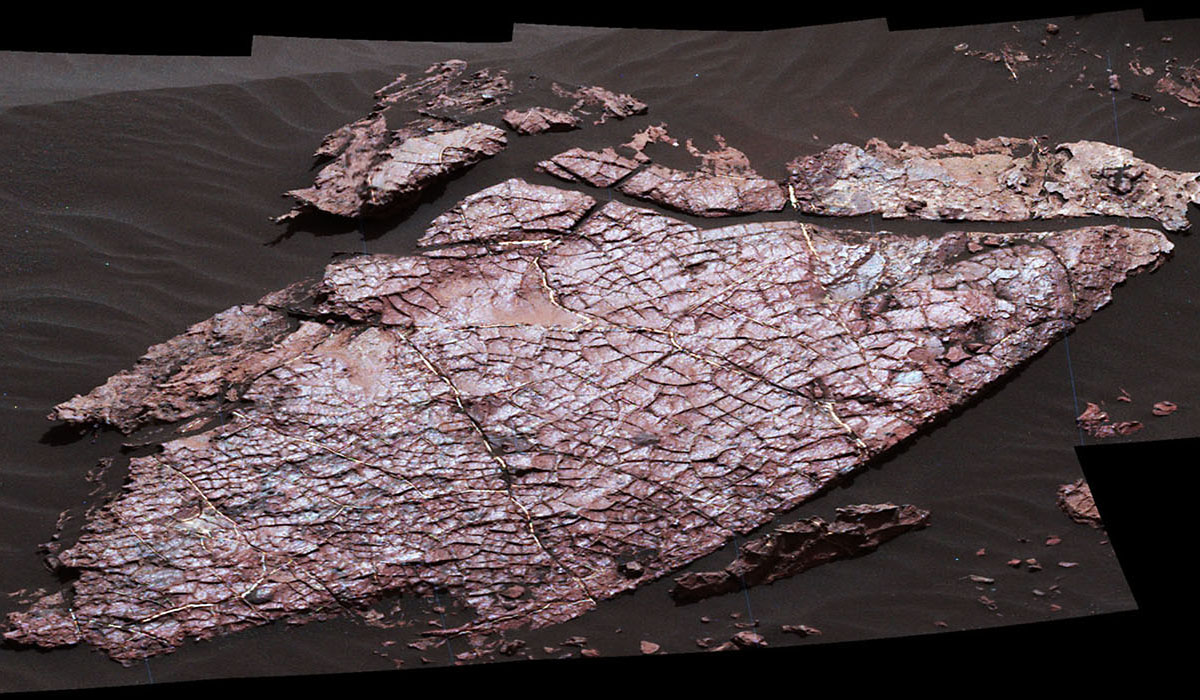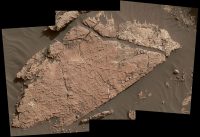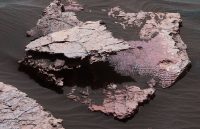This view of a Martian rock slab called “Old Soaker,” which has a network of cracks that may have originated in drying mud, comes from the Mast Camera (Mastcam) on NASA’s Curiosity Mars rover. It was taken on Dec. 20, 2016. The slab is about 4 feet long.
Home This view of a Martian rock slab called “Old Soaker,” which has a network of cracks that may have originated in drying mud, comes from the Mast Camera (Mastcam) on NASA’s Curiosity Mars rover. It was taken on Dec. 20, 2016. The slab is about 4 feet long. This view of a Martian rock slab called "Old Soaker," which has a network of cracks that may have originated in drying mud, comes from the Mast Camera (Mastcam) on NASA's Curiosity Mars rover. It was taken on Dec. 20, 2016. The slab is about 4 feet long.




